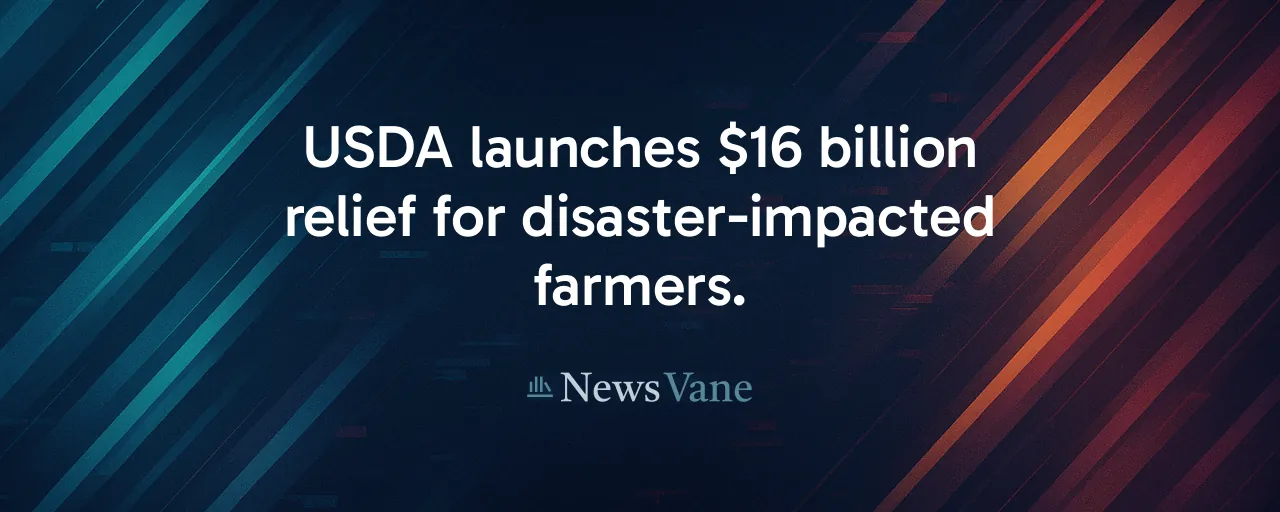A Lifeline for Farmers
On July 9, 2025, the U.S. Department of Agriculture launched a $16 billion relief program to support farmers battered by natural disasters in 2023 and 2024. Wildfires, hurricanes, floods, and droughts left countless producers grappling with crop losses, threatening their livelihoods and rural economies. The Supplemental Disaster Relief Program, or SDRP, promises swift aid, with applications opening just one day after the announcement. For many farmers, this assistance could mean the difference between recovery and ruin.
However, as farmers line up at county offices, questions swirl about whether the program can deliver fairly across diverse regions and farm sizes. Timely aid stabilizes not just farms but entire communities reliant on agricultural income, underscoring the high stakes.
How the Program Works
The SDRP operates in two stages. Stage One, starting July 10, 2025, targets farmers who already received crop insurance or Noninsured Crop Disaster Assistance Program payments for 2023-24 losses. These producers, hit by events like tornadoes or excessive heat, can access pre-filled applications mailed on July 9. Stage Two, set for fall 2025, will cover uninsured or shallow losses, addressing gaps for those without prior coverage.
Payments in Stage One are capped at 90 percent of losses, with a 35 percent factor applied to stretch limited funds. To ensure long-term resilience, recipients are required to purchase crop insurance for the next two years at a 60 percent coverage level. Failure to comply triggers repayment with interest. While this rule aims to reduce future risks, it could strain farmers already pinched by premiums.
A Track Record of Aid
Disaster relief for farmers is not new. Since the 1980s, the USDA has funneled billions through programs like the Wildfire and Hurricane Indemnity Program and the Emergency Relief Program. Annual aid has averaged over $10 billion since 2017, driven by escalating climate-driven disasters. The current $16 billion SDRP builds on this history, complementing $7.8 billion in commodity payments and $1 billion for livestock losses already disbursed in 2024.
Research underscores the importance of speed. Studies from the USDA's Economic Research Service show faster payments cut farm bankruptcies by stabilizing cash flow. The SDRP's one-day turnaround from announcement to signup outpaces the 13- to 19-month delays seen in prior programs. However, historical data also reveals a sticking point: aid often skews toward larger farms with robust insurance, leaving smaller operations in the dust.
Equity Under Scrutiny
A core tension in the SDRP is access. Stage One prioritizes insured farmers, delaying help for those without coverage until fall. The 35 percent payment factor, while simplifying delivery, may shortchange producers with high losses but low coverage. Four states, Connecticut, Hawaii, Maine, and Massachusetts, opted for separate block grants, raising concerns about inconsistent benefits. Farmers in these states face uncertainty as state agencies negotiate terms.
Academic reviews of past programs highlight disparities. Smaller farms, minority producers, and those in low-coverage regions often receive less aid relative to their losses. The SDRP's flat payment factor, though streamlined, risks perpetuating this gap. Advocates for small farmers argue that tiered payments, favoring those with fewer resources, would level the playing field without slowing delivery.
Balancing Speed and Resilience
The SDRP's push for speed responds to real needs. Farmers facing liquidity crunches need cash to replant, pay vendors, or cover loans. Rural towns, from feed stores to schools, feel the ripple effects of farm income. The program's reliance on existing insurance data cuts red tape, ensuring funds flow quickly. Speed is crucial, but it does not guarantee fairness or future stability.
The mandate to purchase crop insurance for two years aims to break the cycle of disaster dependency. Experts agree that insured farms recover faster and face less risk. However, premiums can burden low-margin producers, particularly in regions with frequent disasters. A potential fix lies in expanding subsidies for small farms, making coverage affordable without punishing those already stretched thin.
A Broader Challenge
Beyond immediate aid, the SDRP exposes deeper issues. Climate trends point to more frequent and severe disasters, straining ad-hoc relief models. The USDA's $30 billion portfolio, while substantial, competes with other priorities like nutrition and conservation. Taxpayers and budget watchdogs question whether current funding levels can keep pace with rising losses. Meanwhile, environmental groups call for tying aid to sustainable practices, though such conditions could complicate urgent relief.
State block grants offer flexibility but risk uneven outcomes. National guidelines would standardize benefits, ensuring farmers in grant states aren't left behind. Data-sharing between federal and state agencies, already critical for SDRP's rollout, needs refinement to speed future programs. These steps would strengthen the system without overhauling its core.
Looking Ahead
The SDRP represents a critical step for farmers reeling from 2023-24 disasters. Its rapid launch and $16 billion scope offer hope to producers and rural communities. Yet, its success hinges on addressing gaps in access and ensuring small farmers aren't sidelined. Balancing speed with equity remains the program's toughest test.
Longer-term, a permanent disaster program would reduce reliance on stopgap measures. Tiered payments, expanded insurance subsidies, and standardized block grants would make aid fairer and more predictable. Incentives for climate-resilient practices, if carefully designed, are likely to curb future losses without delaying help. For now, farmers await payments, hoping the system delivers as promised.
As the USDA navigates these challenges, one truth stands out: farming is a gamble against nature, and relief programs provide a lifeline, but they are not a cure. The SDRP's rollout is a chance to get it right, supporting those who feed the nation while building a system that can weather the storms ahead.
